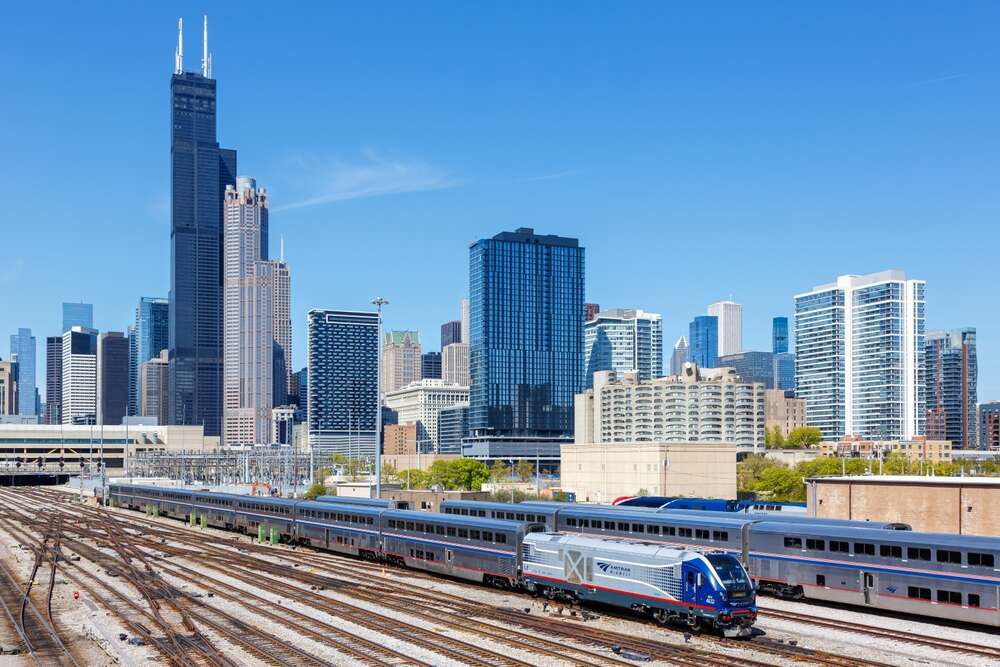
Over the past few months, several national publications have written about the challenges involved in trying to work during a commute. Despite continuous technological innovations, it can still be difficult to maintain a reliable Wi-Fi connection during a train journey. Video calls – an essential aspect of our post-pandemic workflows – are functionally impossible.

While these articles aimed to help everyday riders improve their experience, they indirectly pointed to some of the biggest and most common challenges facing our infrastructure today. The US’s bipartisan infrastructure bill passed in 2021 allocated hundreds of billions of dollars to upgrading our nation’s transit infrastructure. However, addressing existing challenges and bringing this infrastructure into the 21st century is easier said than done.
To ensure the efficacy of government infrastructure funding, we must first address the key process issues that hinder the success of such programmes. Examining rail connectivity reveals essential process challenges that must be resolved before we can make effective, long-lasting improvements.
Public infrastructure projects almost always involve three parties: a public agency organising the project and soliciting bids from private contractors; the private companies performing the upgrade itself; and one or more government organisations providing funding and subsidies.
The reason why you can’t conduct a reliable video call yet on a train in the US isn’t because the technology isn’t ready, or because the government isn’t willing to fund it, or because transit agencies don’t want to improve their customer experience. There is simply a lack of communication between the three parties before a project is implemented; to solve the problem, we need the three parties to work together to shape policies and procurement processes. Anything less will lead to wasted resources and disappointing results.
Zooming out on the challenges
While we can use rail connectivity as an example, I have no doubt that this challenge applies to most publicly funded infrastructure projects. In the case of a rail line, you need to design your system based on desired throughput – how much data do you need to be able to transmit across your network and at what speed?
That metric needs to be the guiding light for all the decisions that follow. A rail connectivity solution consists of dozens of separate components: if even one of those components doesn’t support your desired throughput, the system won’t meet your expectations. Think about the string of Christmas lights you put on your roof: if one bulb goes out, your entire strand is useless.
No single technology – satellite, mobile networks, trackside base stations – is capable of delivering reliable connectivity for an entire rail line; the technologies need to work together in order to deliver the desired performance. Connectivity also depends on routers, access points, and other specialised networking equipment. While these pieces of the puzzle need to be designed and implemented together, procurement and funding programmes frequently target only one part of the entire system.
[Read more: Reality will temper Biden’s grand ambitions for passenger rail]
A transit agency could receive government support to upgrade the routers on their fleet, only for the connection to remain unreliable due to poor mobile coverage. However, that money needs to be spent within a defined window, and the agency can’t hold it until they’re able to perform a comprehensive upgrade.
This system of funding and incentives leads agencies to upgrade individual trees when they need to be thinking instead about the entire forest. They make changes piece by piece, resulting in a system that’s never actually operating at full capacity.
Working together towards smarter solutions
We know that government funding isn’t being implemented as efficiently as it could be. We know that no single private company can solve the entirety of the rail connectivity challenge. How do we solve the problem?
The key is to foster communication and collaboration as early as possible in the infrastructure upgrade process. We all want better connectivity on our rail journeys. Let’s work together on the strategy that will make it possible.
Public-private collaboration during the design phase helps to improve efficiency and reduce waste. A single railcar might need connectivity for four different functions: passenger Wi-Fi; fare collection; video surveillance; and computer-aided dispatch/automatic vehicle location (CAD/AVL). If these functions are funded by separate programmes, the result is often four different routers for four different purposes. This is an unforced error and an easily correctable mistake.
Taking a top-down approach to infrastructure design would also allow us to foster interoperability among components. Some of this equipment needs to be replaced on five-year cycles; if that equipment isn’t compatible with newer components, it can prevent agencies from making the vital upgrades they need to improve their connectivity performance. As an industry, we can work together to solve this problem and lay the foundation for long-term interoperability.
Raising the tide
What will it take to get these different parties on the same page? At a minimum, this type of overhaul would require engagement from the Department of Transportation, the Federal Communications Commission, a wide range of private companies, and several leading transportation agencies. These discussions need to happen as early as possible before mistakes are codified in policy and government contracts. It will require people to set egos aside and to momentarily put collaboration ahead of competition.
The result is worth working towards – all we must do is look to Europe to see examples of what’s possible. In Sweden and Germany, you could easily conduct a video call during your rail commute. There’s no reason why we can’t have that here.
Improving connectivity on our transit infrastructure will undoubtedly lead to increased ridership, which will lead to follow-on benefits for everyone involved – agencies, vendors, and government leaders alike. A rising tide lifts all boats. We can work together to make it happen.
[Read more: Biden’s transportation department could be great for cities]






